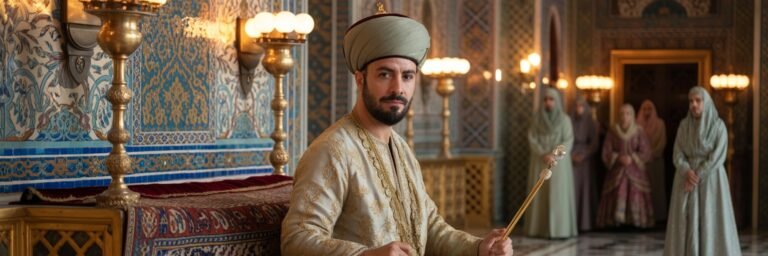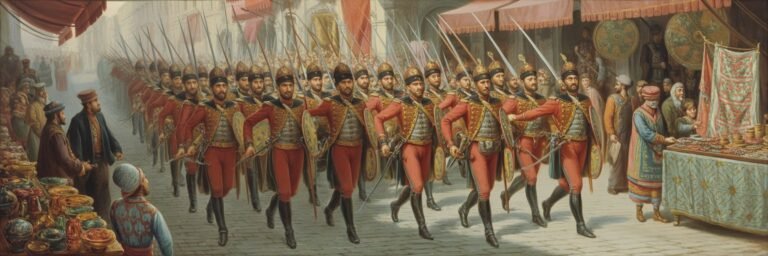INTRODUCTION
The Ottoman Empire, a powerful state that lasted over 600 years (from 1299 to 1922), is an epoch of history that shaped continents and made profound impacts in areas such as politics, culture, and the arts. While the metanarrative of the Ottoman Empire frequently centers around sultans and male political figures, considerable amounts of this extended period saw women exerting colossal influence, commanding political clout, and fundamentally molding the societal and cultural fabric of the empire. The fabric of this fascinating era was colored by figures such as Hurrem Sultan, Kösem Sultan, and others who were not merely vessels of procreation and pleasure; they were master strategists, philanthropists, power players, and architects of infrastructure.
HISTORICAL BACKGROUND
From the 13th to the 20th century, women in the Ottoman Empire occupied diverse domains, evolving from secluded concubines in the harems to powerful powerbrokers. The period known as the ‘Sultanate of Women’ marked a particular zenith in their influence. This period (roughly from 1533 to 1656), witnessed women maneuvering adeptly within the patriarchal system to emerge as central figures of the empire.
Characterized by the ascendancy of queen mothers and royal consorts, the Sultanate of Women was ignited by Hurrem Sultan, the wife of Sultan Suleiman the Magnificent – an exception in a culture where sultans did not marry. Intelligent and politically astute, Hurrem’s influence on Suleiman was profound, resulting in policy changes and monumental behavioral deviations such as her remaining his sole wife and gaining freedom for her family.
THEORIES AND INTERPRETATIONS
Modern scholars often present the influence of Hurrem and others as a ‘feminization’ of the royal Ottoman culture. Historian Leslie P. Peirce argues in her book, ‘The Imperial Harem: Women and Sovereignty in the Ottoman Empire’, this period was not about women seizing uncharacteristic power, but the high politics of the harem reflecting a more complex system of power and influence.
Peirce’s theory counters the commonly held Western view of Ottoman women wielding power anomalously. Instead, women’s influence, particularly that of royal mothers and consorts, was a manifestation of the unique checks and balances within the Ottoman Dynasty. It served as an essential balance to the potentially autocratic rule of the sultans.
MYSTERIES AND CONTROVERSIES
The reign of these influential women was not without controversies. They were often seen as dealing ruthlessly with rivals, using dark political machinations to maintain their positions. However, such deductions often stem from a patriarchal worldview, which is uncomfortable with powerful women.
One of the significant controversies pertains to Kösem Sultan. She was held responsible for the regicide of her two sons to maintain her position. Similarly, Safiye Sultan’s affection for the Venetian Republic led many to conclude she was primarily a foreign agent. These allegations continue to be hot topics of debate among historians.
SYMBOLISM AND CULTURAL SIGNIFICANCE
These Ottoman women became symbols of a unique form of female emancipation within a largely patriarchal society. They pushed past ascribed roles of reproductive and sexual objects to master the political terrain expertly.
Kösem, Hurrem and others became bridging figures between the Western and Eastern worlds, playing key roles in diplomatic relations. Their patronage of arts and architecture also refined the cultural aspects of the empire, such as Hurrem Sultan’s building of public baths, mosques, and hospitals.
MODERN INVESTIGATIONS
Modern research into the era of powerful Ottoman women is uncovering more elements of their rule and their impacts on their world. These investigations focus on their political maneuverings and cultural initiatives to provide a fuller picture of their roles and influence. They also highlight the need to appreciate the history of the Ottoman Empire through its women, lending credence to the fact that the empire’s heights were, in no small part, due to their influence.
LEGACY AND CONCLUSION
By fusing political and survival strategies with philanthropy, these women left an indelible mark on Ottoman history which remains apparent in many aspects of modern Turkey.
The mosques, baths, and social institutions they founded bear the distinctive stamp of their influence, reaffirming their status as more than mere appendages of powerful men. They were shapers of the empire and architects of its legacies.
In conclusion, while the Ottoman Empire’s historical narrative is often dominated by male figures, the pivotal roles played by women remain undeniable. Whether they operated within or beyond the constraints of their society, these Imperial women emerged as shapers of one of history’s most remarkable empires, subtly challenging and transforming the social norms of their time. They formed an essential part of shaping this vast empire, contributing significantly to its longevity and dominance in world history.






